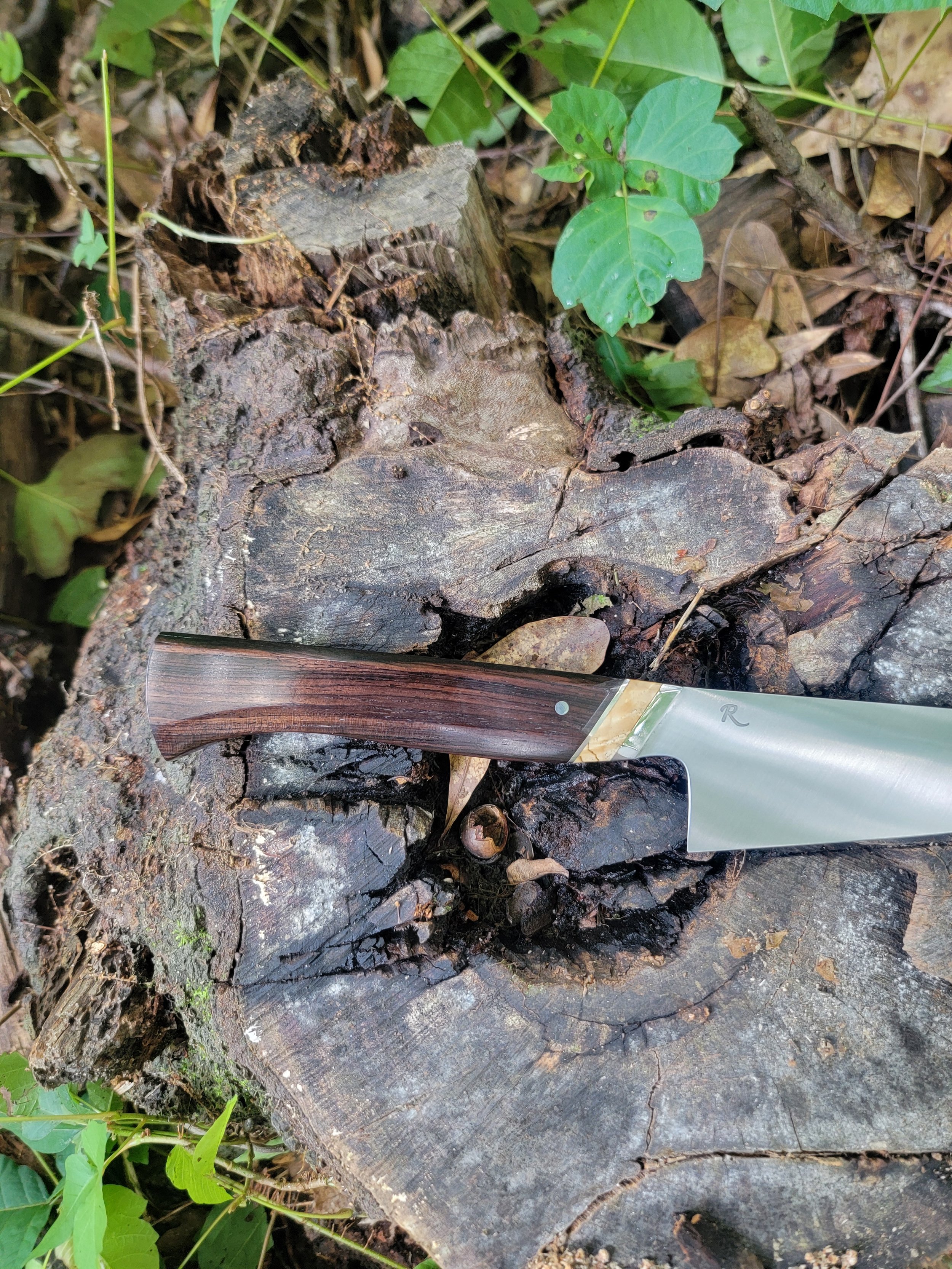 Image 1 of 6
Image 1 of 6

 Image 2 of 6
Image 2 of 6

 Image 3 of 6
Image 3 of 6

 Image 4 of 6
Image 4 of 6

 Image 5 of 6
Image 5 of 6

 Image 6 of 6
Image 6 of 6







Honesuki in Carbon (Masterline)
Designed specifically for breaking down poultry, the honesuki is a Japanese-style boning knife with a pointed tip and a stiff, triangular blade. Unlike flexible Western boning knives, the honesuki excels at precise, controlled cuts around joints and bones. It’s perfect for deboning chicken, trimming meat, and even small butchery tasks. Razor-sharp and highly maneuverable, it’s a favorite for anyone who prepares meat with care and precision.
Knife Details:
Blade length- 5”
Heel height- 1.6”
Handle length- 5.2”
Steel- 26c3 Carbon
Handle material- African blackwood/ Box elder/ Stainless Steel
Edge thickness and hrc- .005” and 65 hrc
Edge angle 15 degrees
Grind: Walkschliff
Weight: 3.3 oz
The walkschliff grind is a grind that is essentially a double convex grind. Meaning that both the edge and spine are tapered from the middle. This makes the cross section of the knife egg shaped. The reason why I've switched over to the walkschliff grind is
1. Because it adds lateral durability to the knife (including the tip) meaning more durability through hard use.
2. Adds blade stiffness without adding weight
3. In my opinion the best way to get effective food release
4. Adds edge durability without “wedging”. Wedging is when the knife cutting through the food medium is too thick and you experience drag while completing the cut.
Food release is the inability of food to stick to the side of the blade. It's something that isn't very easy to achieve as a knife maker, but professional and home cooks alike look for. In my experience and testing the walkschliff grind is the most effective at achieving this.
Designed specifically for breaking down poultry, the honesuki is a Japanese-style boning knife with a pointed tip and a stiff, triangular blade. Unlike flexible Western boning knives, the honesuki excels at precise, controlled cuts around joints and bones. It’s perfect for deboning chicken, trimming meat, and even small butchery tasks. Razor-sharp and highly maneuverable, it’s a favorite for anyone who prepares meat with care and precision.
Knife Details:
Blade length- 5”
Heel height- 1.6”
Handle length- 5.2”
Steel- 26c3 Carbon
Handle material- African blackwood/ Box elder/ Stainless Steel
Edge thickness and hrc- .005” and 65 hrc
Edge angle 15 degrees
Grind: Walkschliff
Weight: 3.3 oz
The walkschliff grind is a grind that is essentially a double convex grind. Meaning that both the edge and spine are tapered from the middle. This makes the cross section of the knife egg shaped. The reason why I've switched over to the walkschliff grind is
1. Because it adds lateral durability to the knife (including the tip) meaning more durability through hard use.
2. Adds blade stiffness without adding weight
3. In my opinion the best way to get effective food release
4. Adds edge durability without “wedging”. Wedging is when the knife cutting through the food medium is too thick and you experience drag while completing the cut.
Food release is the inability of food to stick to the side of the blade. It's something that isn't very easy to achieve as a knife maker, but professional and home cooks alike look for. In my experience and testing the walkschliff grind is the most effective at achieving this.